13+ Sample College Marketing Plan
-
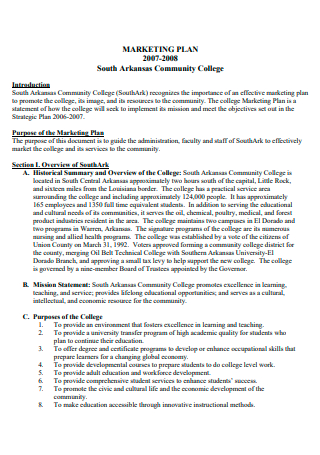
Community College Marketing Plan
download now -
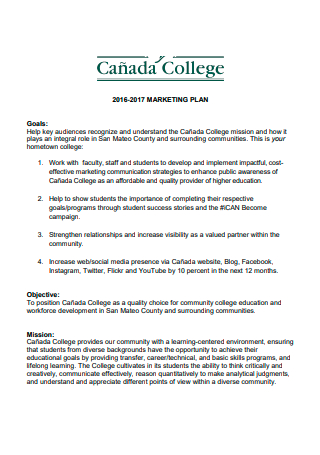
Basic College Marketing Plan
download now -
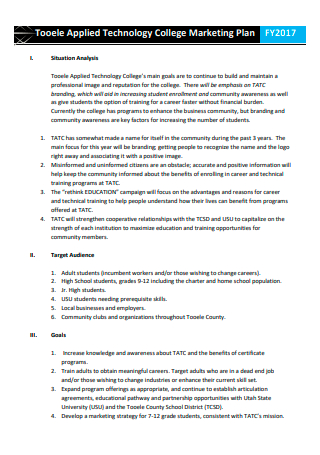
Technology College Marketing Plan
download now -
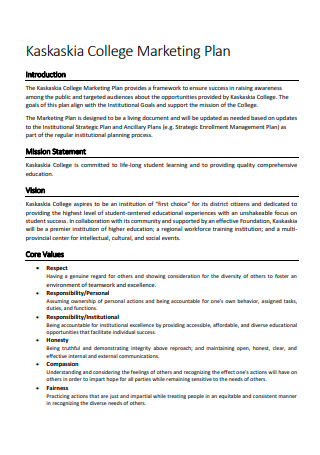
College Marketing Plan Example
download now -
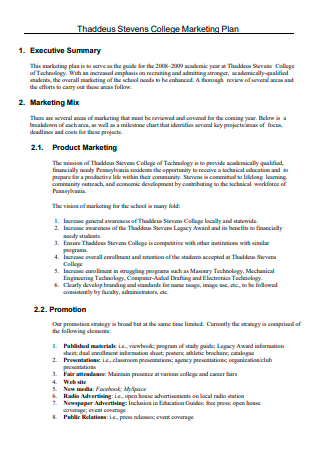
Printable College Marketing Plan
download now -
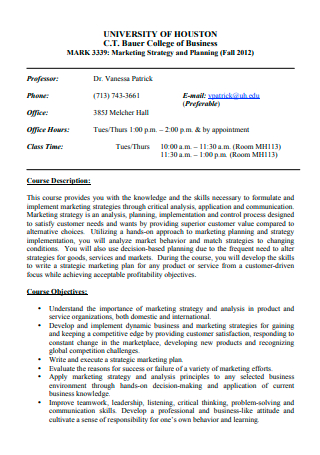
College of Business Marketing Planning
download now -
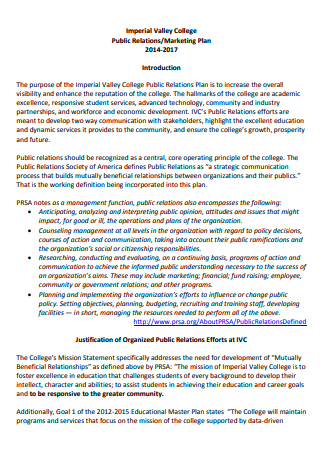
Imperial College Marketing Plan
download now -
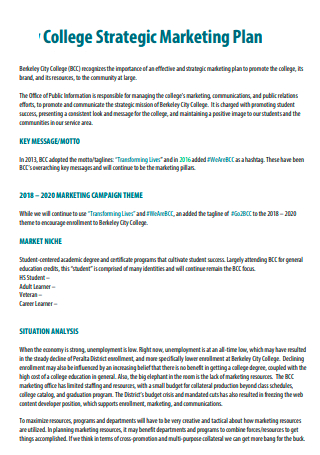
College Strategic Marketing Plan
download now -
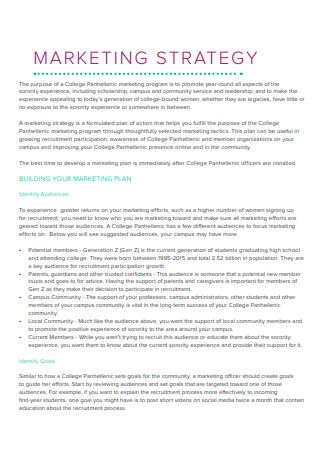
College Marketing Strategy Plan
download now -
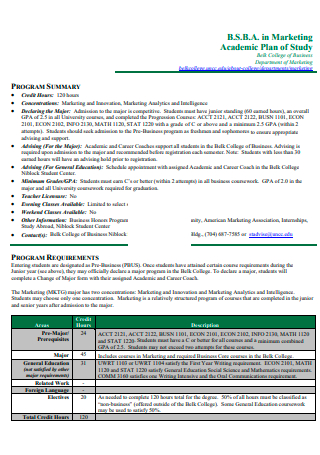
College Marketing Academic Plan
download now -
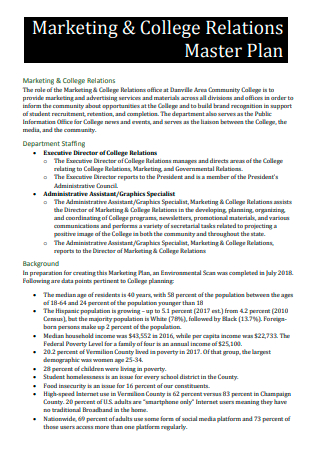
College Marketing Master Plan
download now -

College Marketing Plan in PDF
download now -

Draft College Marketing Plan
download now -
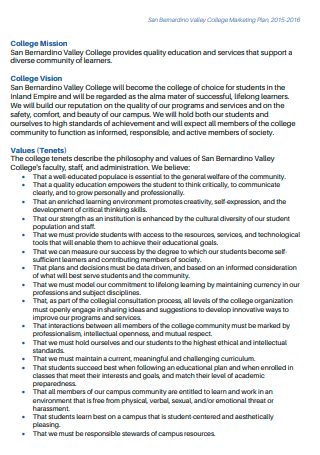
Formal College Marketing Plan
download now
FREE College Marketing Plan s to Download
13+ Sample College Marketing Plan
What IS a College Marketing Plan?
What are the Payoffs of Having a Good College Marketing Plan?
How To Create an Effective College Marketing Plan
FAQs
How are schools funded to operate?
What are the different types of higher educational institutions in the US?
What are the other strategies to promote a college?
What IS a College Marketing Plan?
University of Detroit Mercy online marketing platforms to reach out to prospective students or enrollees in a bid to increase their enrollment, as well as to increase the visibility to the public about what they do and what they offer as an educational institution. That is an example of a college marketing plan. A college marketing plan is akin to an advertising strategy that colleges use to attract potential students and to turn them into actual student enrollees. It is a document that lists down the goals, objectives, and action plans of a college. Colleges need an action plan to ensure their survival. Having a sufficient or a high number of enrollees creates a positive impression on the school as a whole. If students are lining up to be enrolled, that can probably mean that the school is providing all-around good services, programs, courses, and resources, which leaves a good and positive impact on the school’s profile. If a school has a good profile, the local government, or the state, tends to show more support towards the school, and funds being asked to keep the school running smoothly will surely be granted.
What are the Payoffs of Having a Good College Marketing Plan?
More than just being ranked in public as the number one college to go to, there are a lot of reasons why colleges opt to use a marketing plan in securing their targeted enrollment numbers. More than just the enrollees, there are a lot of stakeholders involved in a college’s operation. You have your school board district, the parents, the faculty, professors, teachers, students, and even your local community. Everyone needs to come on board if they want the college to make it on the top because if a college within a certain community is known for all the best things a college can offer, the college actually brings along with it on top of its pedestal its community where it is located. The local community gets to share the college’s spotlight. Aside from that, what are the other benefits that can be gained from having a good college marketing plan?
How To Create an Effective College Marketing Plan
Colleges are akin to businesses in a way. They have an organizational structure and manpower. More importantly, they have costs and expenses, and other necessities that need to be provided to keep their school’s operations running. To get funding and support, colleges need to build and establish a good and solid reputation, especially in the public’s eye. They need to prove to the state and to the community that they are a school that’s worth keeping. One of the ways that they can prove that is to have a consistent, year after year, a high number of student enrollees. They need to prove to their funders that the people are highly interested in sending their kids to their college. To do that, colleges need to have a good and effective marketing plan. Just like a business marketing plan, a college marketing plan targets a specific audience, calls out to their needs, and provides action steps on how to achieve the college’s goals and objectives. A college marketing plan should be flexible enough to fit in the college’s objectives but essentially should contain the following elements.
-
1. Executive Summary
A college marketing plan executive summary provides a brief background about the college, and the college’s goals and objectives. It gives an overview of how the college plans to tackle and accomplish its objectives. Most executive summaries contain a mission and a vision statement. A mission statement states the reason or the purpose behind the college’s marketing plan, while a vision statement describes what the college hopes to achieve through its marketing plan, usually within a given period. Oftentimes, the college’s culture and values are also reflected in its mission and vision statements.
-
2. Services Offered
In this section, the services of the college are outlined and explained. Especially highlighted are courses, programs, or services that are unique and make the college stand out from its competitors. This section could include listing down what are the degrees offered, either bachelor, associates, master’s, or doctorate degrees; what is the core curriculum, the prospectus, and so on; and/or what are the college’s infrastructure features, like does it have a gym, a track field, swimming pool, dormitories, or advanced IT technologies, et cetera. Also included are scholarships offered, student programs, activities, events, and even community service programs.
-
3. Marketing Analysis
The marketing analysis section helps to understand the current market condition the college is in. It is a feasibility study that looks to see how the college can penetrate the market of attracting student enrollees amidst several environmental impacting factors. One way of doing a market analysis is by carrying out SWOT analysis. SWOT refers to the Strengths, Weaknesses, Opportunities, and Threats aspects of the college. Strengths are those features of the college that make it unique and stand out from other schools. It could be that the college is complete when it comes to facilities, or it has high-end IT infrastructures in place, or it could be that it has good quality or well-known teachers on board as part of its faculty staff. Weaknesses are those aspects of the college that need improvement or more support.
It could be a lack of educational resources or equipment, lack of qualified teachers for a certain course, and so on. Opportunities are those that the college can leverage to gain momentum in achieving its objectives, such as utilizing social media and social networking platforms as means of advertising the school. Threats are those that hinder or potentially harm or put at risk the college’s operation. It could come in the form of lack of support and funding from the state, the increased presence of other educational institutions in the community, or that the place where the college is located is prone to extreme weather conditions that always affect the schedule of classes.
-
4. Marketing Strategy
The marketing strategy section is the very essence of the college marketing plan. This is where ideas and strategic actions are introduced as ways of accomplishing the college’s goals and objectives. Aside from using social media and social networking sites as a means of advertising the school, another good college marketing strategy is creating and having a visible presence online over the internet. Of course, schools nowadays already have their websites, but being active online is the important part of having a website. The first is to have good search engine optimization (SEO) marketing. SEO marketing ensures that the college stays on top of everywhere keyword search for college-related searches. Next is to have active staff answering online queries. People are most likely to go to a college that can give them the attention that they’re looking for. A pay-per-lead affiliate program is another good marketing strategy.
The college gets into partnership with an online business, creates and places their banner lead on that business’s website so that every website visitor that the business has can see the ads of the college. The business earns revenue each time a visitor clicks on the college’s ad. Another marketing strategy, albeit traditional, is to send out an attractive, well-designed prospectus to potential students. The traditional way is to send the prospectus by mail, but with the advent and trend of online marketing, the fastest way is through email or through social networking platforms. Hiring an influencer to promote the college is another popular and effective marketing strategy. People listen to influencers with good and positive public ratings, and each time the influencer brought up the college’s name is likely to increase public or potential students’ interests.
FAQs
How are schools funded to operate?
Schools in the US generally get their funding from the federal government at a certain percentage. To cover up for the remaining balance, the state and local government allocates their budget for the remaining funds needed for education. This budget comes from the states’ and local governments’ tax revenues, either from sales or business taxes or individual income taxes.
What are the different types of higher educational institutions in the US?
The different types of higher education institutions are private, public, Ivy League universities, technical schools, and community colleges. Private universities are not supported by the state or the local government. Their funding comes from direct payment of tuition fees, research grants, as well as alumni donations. Public universities are sponsored by the government, hence, get their funding from the state or the local government. Ivy League universities are more known for their exclusive, high standard classification, not to mention high tuition fees. Technical schools are more focused on science and math career courses, while community colleges offer associate degrees which are typically two-year degrees college programs.
What are the other strategies to promote a college?
Using alumni connections is probably one of the best ways to market a college. Who else can be a college’s biggest supporter, other than its own alumni? A referral coming from alumni could do wonders for a college’s enrollment status. Another strategy is hosting a public contest that offers free enrollment. Nobody could say no to a chance to win a free paid-up enrollment at a college. Promotional videos or featured write-ups are also another way of promoting a college.
Marketing a college can be a very daunting task, but then it’s one of the effective strategies to be able to achieve a college’s goal of increasing student enrollment and building a positive reputation. A marketing plan could be a make or break for any colleges’ success, that’s why a lot of careful planning and strategizing should be put into place when creating a college marketing plan.
Need help in making that effective college marketing plan? Check out our well-designed marketing plan templates. They’re so easy to use and access, that once you use one, you’ll be on your way in making those plans that could put your college at the top spot as the number one college to go to!
